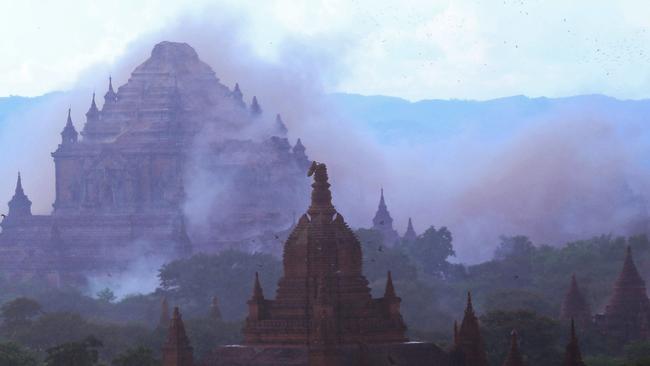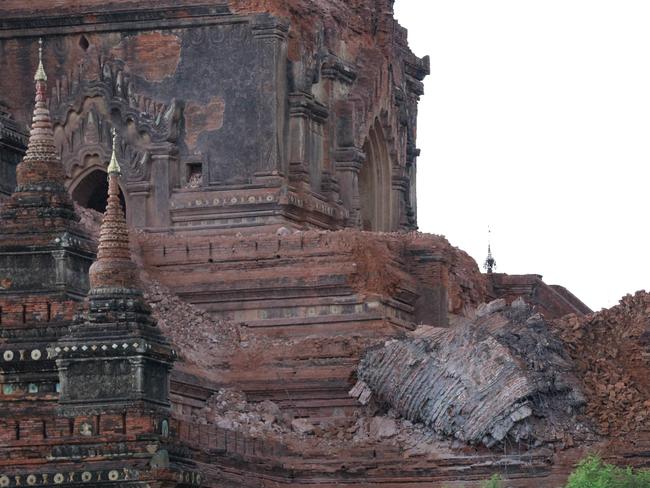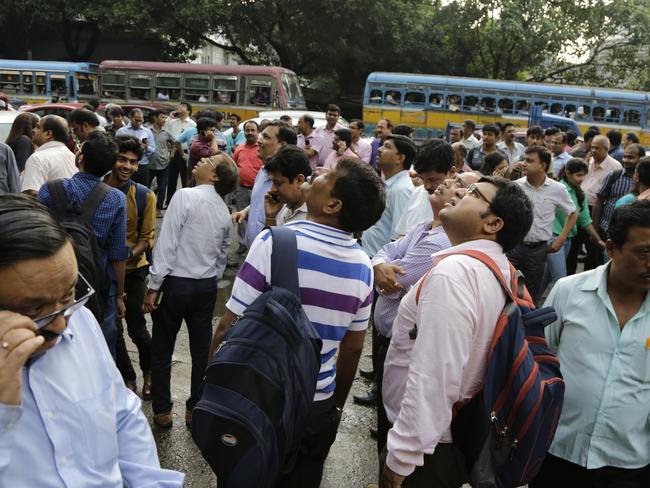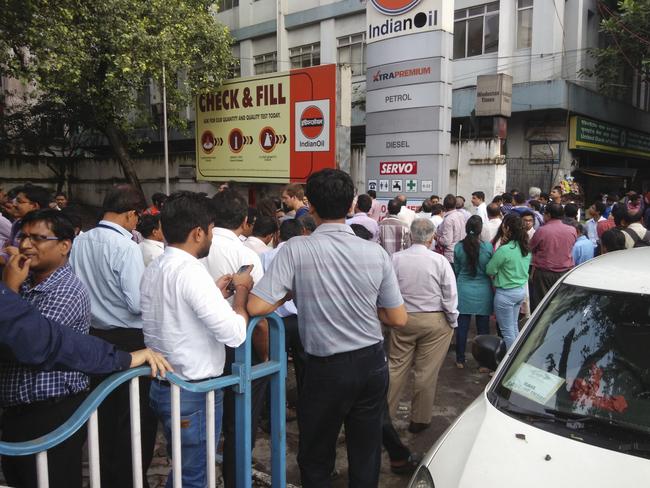Myanmar rocked by 6.8-magnitude earthquake
AT least three people have died after a powerful 6.8-magnitude earthquake hit central Myanmar, with tremors felt in neighbouring countries.

A POWERFUL 6.8-magnitude earthquake has rocked central Myanmar, killing at least three people, including two children, and damaging around 60 pagodas in the ancient city of Bagan.
The quake, which the US Geological Survey said hit at a depth of 84 kilometres, was also felt across neighbouring Thailand, India and Bangladesh, sending panicked residents rushing onto the streets.
At least one man was killed in Magway region where the quake struck, said Han Zaw Win, a local MP from Pakokku township.
“A 22 year-old man was killed when a nearby building collapsed during the earthquake,” he told AFP, adding that a woman was also injured.
Local reports say four people were killed, but that figure could not be confirmed.
The tremor comes after a massive 6.2-magnitude earthquake hit central Italy, leaving dozens dead.

A local official reported heavy damage to several temples in Bagan — Myanmar’s most famous archaeological site and a major tourist destination some 30 kilometres north of the quake’s epicentre.
“About 60 pagodas in Bagan were damaged. Some were seriously damaged,” said Aung Kyaw, the director of Bagan’s culture department.
A tourist police officer from Bagan confirmed the damage and said a Spanish tourist was slightly hurt when the quake knocked her from the temple where she was watching the sunset.
Officials confirm 4 deaths, 68 pagodas damaged by 6.8 magnitude #earthquake in #Myanmar | https://t.co/gAPMkl2uMV pic.twitter.com/5e2Z5aXBFw
— The Myanmar Times (@TheMyanmarTimes) August 24, 2016
Many pagodas in Bagan damaged by the earthquake #Burma #myanmar #earthquake pic.twitter.com/haySDtqdTB
— Hnin Yadana Zaw (@hninyadanazaw) August 24, 2016
The USGS estimated that the earthquake’s impact would be “relatively localised” but noted that many buildings in the region are “highly vulnerable” to shaking.
Soe Win, a local MP from Chauk — a riverside town close to the epicentre — said it was the worst earthquake he had experienced in years.
“More than eight pagodas in town collapsed,” he told AFP, referring to Chauk. “Two buildings collapsed as well, while some others were cracked. People in town are still scared.”

The earthquake caused high-rise buildings in Myanmar’s largest city Yangon to sway, as well as those in the Thai capital Bangkok and the Indian city of Kolkata.
“Services of the underground railway have been suspended fearing aftershocks of the quake,” Kolkata Metro Railway spokesman Indrani Banerjee told AFP.
The quake was also felt throughout south and southwestern Bangladesh close to the border with Myanmar, with residents running outside.
6.8 Earthquake Epicentre In #Myanmar https://t.co/1mX3yYTPWs #PrayForMyanmar @UNDP_Myanmar @UNFPAMMR @UNOCHA_ROP pic.twitter.com/YGDARnTPTB
— Ravi Karkara (@ravikarkara) August 24, 2016
At least 20 people were injured as workers tried to flee a building in the Savar industrial district outside Dhaka, ATN Bangla television reported.
“All of us ran to the streets leaving the houses and shops unsecured as the quake seemed very dangerous,” Nazmus Sakib, from the southern city of Chittagong near the Myanmar border, wrote on his Facebook wall.

Earthquakes are relatively common in Myanmar, although the country has not suffered a major one since 2012. That powerful tremor — also of 6.8 magnitude — struck the centre of the country, killing 26 people and injuring hundreds.
Scaling Bagan’s ancient Buddhist monuments to watch the sun set over the city’s 2500 temples is a daily ritual among tourists and local pilgrims who flock to the site.
The temples, built between the 10th and 14th centuries, are revered in the Buddhist-majority country.
Myanmar, which has opened its doors to a rising tide of visitors since emerging from junta rule in 2011, is eager to see the ancient capital designated as a UNESCO world heritage site.




